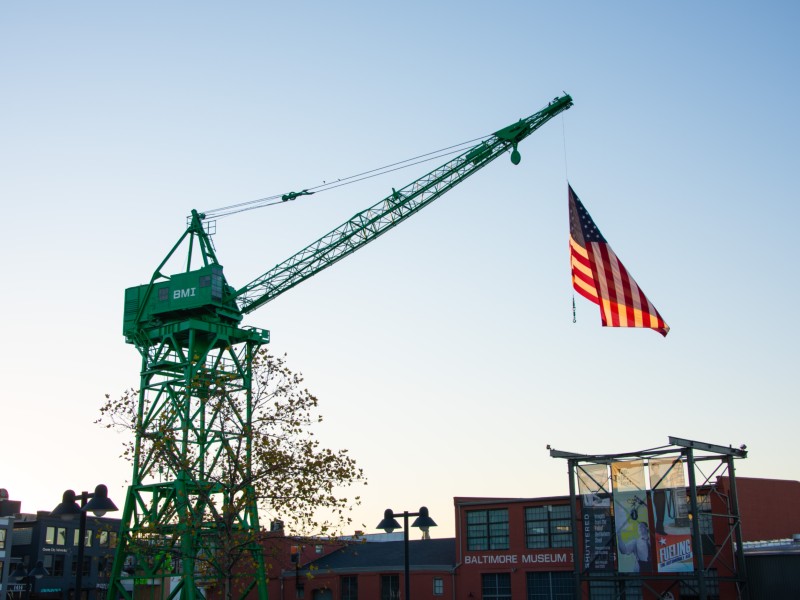Save the Crane
At 100 feet tall, this WWII-era crane is a highly visible remnant of Baltimore’s shipbuilding legacy. Although built to withstand the test of time, its unprotected exposure is beginning to deteriorate the structure itself. Preservation Maryland will join forces with the Baltimore Museum of Industry in promoting their “Save the Crane” campaign to highlight this unique landmark across the state.
Partner: Baltimore Museum of Industry

THE PROBLEM
The 100 feet tall, this WWII-era crane at the Baltimore Museum of Industry is a landmark feature that needs repair to continue to serve as a highlight of not just the museum, but the City of Baltimore.
THE FIX
Preservation Maryland will partner with the Baltimore Museum of Industry to help amplify their Save the Crane campaign, now in its second year, to a successful finish.
HISTORY & SIGNIFICANCE
The Baltimore Museum of Industry’s 110-ton whirly crane—so-called because it could rotate 360-degrees when operable—is a one-of-a-kind artifact that highlights a rapidly disappearing part of Baltimore’s industrial heritage. Constructed in 1942, the crane was originally one of many similar machines located at Bethlehem Steel’s Fairfield shipyard in South Baltimore. With an industrial army of more than 44,000 workers, Fairfield was a vital part of America’s so-called “Arsenal of Democracy,” constructing nearly five hundred Liberty and Victory ships and close to four dozen amphibious landing ships over the course of World War II. Following the closure of Fairfield in 1945, the crane was moved to Bethlehem’s Key Highway shipyard, which soon became the largest repair facility on the East Coast. Over the next four decades, the crane was kept busy repairing ships and converting naval vessels to commercial service.
Despite this impressive record, the crane seemed destined for the scrap heap when the Key Highway yard was closed in 1982. Fortunately, however, the Baltimore Museum of Industry was able to intervene. Eager to ensure that this retired piece of history was not forgotten, the museum convinced the new owners of the former shipyard to donate the idled crane and in 1992 it was removed to its current home.
THREAT & GOALS
As with any outdoor artifact, decades of exposure to the elements have taken their toll on the crane and its longevity is today threatened by deteriorating paint and rust damage. Left unchecked, this deterioration will continue to spread across the steel artifact. In order to address these issues, the Baltimore Museum of Industry embarked on a comprehensive “Save the Crane” campaign to preserve this one-of-a-kind artifact. The ongoing second phase will remedy the most critical issues confronting the crane. Specifically, the second phase of the project will address the crane’s structural integrity by replacing the cables that run along the 80-foot boom with corresponding lengths of weather-resistant galvanized wire rope. Additionally, all of the crane’s existing structural hardware will be replaced with newly fabricated galvanized parts. Once these structural upgrades are complete, a new paint job will then be applied, using coatings tinted to a historically accurate color.

Restored WWII crane supported by the Preservation Maryland’s Six-to-Fix program, 2019.
Updates
OCTOBER 2019
The Baltimore Museum of Industry hosted a special community day to celebrate the completion of this phase of their Save the Crane project.
JULY 2019
Scaffolding went up around the 100-foot steel crane, surface preparation began, and in July painters from Manolis Painting Company applied weather-resistant industrial paint to the crane. The bright green color was selected by the general public in a community poll. The restoration project also included replacing deteriorated structural hardware.
APRIL 2018
Can we count on you?
Preservation Maryland isn’t just preserving the past – we’re investing in our future. In just the past year we’ve invested heavily in our work and refused to accept the mounting challenges as a reason to retreat or hold our position. You are making it all possible.
